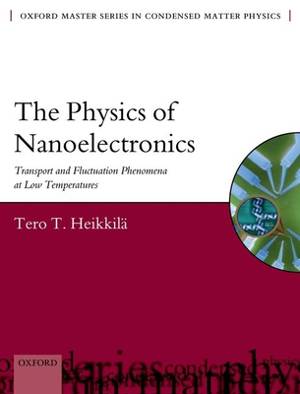
- Afhalen na 1 uur in een winkel met voorraad
- Gratis thuislevering in België vanaf € 30
- Ruim aanbod met 7 miljoen producten
- Afhalen na 1 uur in een winkel met voorraad
- Gratis thuislevering in België vanaf € 30
- Ruim aanbod met 7 miljoen producten
Zoeken
The Physics of Nanoelectronics
Transport and Fluctuation Phenomena at Low Temperatures
Tero T Heikkilä
€ 180,45
+ 360 punten
Omschrijving
Advances in nanotechnology have allowed physicists and engineers to miniaturize electronic structures to the limit where finite-size related phenomena start to impact their properties. This book discusses such phenomena and models made for their description. The book starts from the semiclassical description of nonequilibrium effects, details the scattering theory used for quantum transport calculations, and explains the main interference effects. It also describes how to treat fluctuations and correlations, how interactions affect transport through small islands, and how superconductivity modifies these effects. The last two chapters describe new emerging fields related with graphene and nanoelectromechanics. The focus of the book is on the phenomena rather than formalism, but the book still explains in detail the main models constructed for these phenomena. It also introduces a number of electronic devices, including the single-electron transistor, the superconducting tunnel junction refrigerator, and the superconducting quantum bit.
Specificaties
Betrokkenen
- Auteur(s):
- Uitgeverij:
Inhoud
- Aantal bladzijden:
- 296
- Taal:
- Engels
- Reeks:
Eigenschappen
- Productcode (EAN):
- 9780199592449
- Verschijningsdatum:
- 5/04/2013
- Uitvoering:
- Hardcover
- Formaat:
- Ongenaaid / garenloos gebonden
- Afmetingen:
- 188 mm x 246 mm
- Gewicht:
- 793 g

Alleen bij Standaard Boekhandel
+ 360 punten op je klantenkaart van Standaard Boekhandel
Beoordelingen
We publiceren alleen reviews die voldoen aan de voorwaarden voor reviews. Bekijk onze voorwaarden voor reviews.








